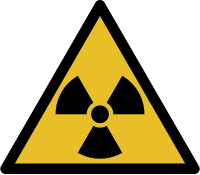Radiographer
A radiologic technologist, also known as medical radiation technologist[1] and as radiographer[2], performs imaging of the human body for diagnosis or treating medical problems. Radiologic technologists work in hospitals, clinics, medical laboratories and private practice.

Nature of the work
Radiologic technologists use their expertise and knowledge of patient handling, physics, anatomy, physiology, pathology and radiology to assess patients, develop optimal radiologic techniques or plans and evaluate resulting radio graphic images.
The allied medical professions include many branches such as, respiratory therapist, physical therapist, surgical technologist, nursing and others. The branch of the allied health field known as radiologic technology also has its own sub-specialties. The term radiologic technologist is a general term relating to various sub-specialties within this field. Titles used to describe the nature of the work vary, such as nuclear medicine technologist, radiographer, sonographer, radiation therapist, etc.
Radiologic technology modalities (or specialties):
- Diagnostic radiography – deals with examination of internal organs, bones, cavities and foreign objects; includes cardiovascular imaging and interventional radiography.
- Sonography – uses high frequency sound and is used in: obstetrics (including fetal monitoring throughout pregnancy), necology, abdominal, pediatrics, cardiac, vascular and musculo-skeletal region imaging.
- Fluoroscopy – live motion radiography (constant radiation) usually used to visualize the digestive system; monitor the administration of contrast agents to highlight vessels and organs or to help position devices within the body (such as pacemakers, guidewires, stents etc.)
- CT (computed tomography) – which provides cross-sectional views (slices) of the body; can also reconstruct additional images from those taken to provide more information in either 2 or 3D.
- MRI (magnetic resonance imaging) – builds a 2-D or 3-D map of different tissue types within the body.
- Nuclear medicine – uses radioactive tracers which can be administered to examine how the body and organs function, for example the kidneys or heart. Certain radioisotopes can also be administered to treat certain cancers such as thyroid cancer.
- Radiotherapy - uses radiation to shrink, and sometimes eradicate, cancerous cells/growths in and on the body.
- Mammography - uses low dose x-ray systems to produce images of the human breasts.
As with all other occupations in the medical field, radiologic technologists have rotating shifts that include night duties.
Education
Education slightly vary worldwide mainly because of fairly common references. A high school diploma, passing the entrance requirements and criminal record clearance are mandatory for entry in the radiologic technology program. Formal training programs in radiography range in length that leads to a certificate, an associate or a bachelor's degree. Citing patient safety concerns, international trend now leans towards a bachelor's degree.
The educational curriculum substantially conforms worldwide. Usually, during their formal education, they must learn human anatomy and physiology, general and nuclear physics, mathematics, radiation physics, radiopharmacology, pathology, biology, research, nursing procedures, medical imaging science and diagnosis, radiologic instrumentation, emergency medical procedures, medical imaging techniques, computer programming, patient care and management, medical ethics and general chemistry to name a few.
Risks
- Epidemiological studies indicate that radiologic technologists employed before 1950 are at increased risk of leukemia and skin cancer, most likely due to the lack of use of radiation monitoring and shielding.[3]
- Ionizing radiation, used in a variety of imaging procedures, can damage cells. Lead shields are used on the patient and by the radiologic technologist to reduce exposure by shielding areas that do not need to be imaged from the radiation source. While lead is highly toxic, the shields used medical imaging are coated to prevent lead exposure and are regularly tested for integrity.[4]

- Radiologic technologists who develop x-ray films are exposed to various chemical hazards such as sulfur dioxide, glutaraldehyde, and acetic acid. These agents can cause asthma and other health issues.[5] [6]
- Theoretically, the strong static magnetic fields of MRI scanners can cause physiological changes. After a human neural cell culture was exposed to a static magnetic field for 15 minutes, changes in cell morphology occurred along with some modifications in the physiological functions of those cells. However, these effects have not yet been independently replicated or confirmed, and this particular study was performed in vitro.[7]
- Ultrasound imaging can deform cells in the imaging field, if those cells are in a fluid. However, this effect is not sufficient to damage the cells.[8]
- As with any allied health professional, exposure to infectious diseases is likely, and proper precautions such as sterile technique must be employed to reduce the risk of infection.
- Spinal cord injuries from lifting heavy patients are very common.[citation needed]
References
- ^ http://www.camrt.ca/
- ^ http://www.air.asn.au/
- ^ http://radiology.rsna.org/content/233/2/313.full
- ^ http://www.hps.org/publicinformation/ate/faqs/leadgarmentsfaq.html
- ^ http://erj.ersjournals.com/content/25/2/386.full
- ^ http://docs.google.com/viewer?a=v&q=cache:_riBcwZOJ-oJ:www.austlii.edu.au/au/journals/LegIssBus/2003/3.pdf+occupational+hazards+%22radiographer%22&hl=tl&gl=ph&pid=bl&srcid=ADGEESjUsJVb5yaQ7LdwJ83G6L1A3oELYkIthCeCinm53jWGy5ZE5qAfN_h2djS6qxUJkKCrZoDepnkHNyCLFAN262ETKzoee_FMD8zSMiQgcrHi70SC4aakpPSl7cnALjvEWDI6hJYm&sig=AHIEtbRthwNxyrXqWvcMg9hv1ickjcD-QA
- ^ http://www.biomedical-engineering-online.com/content/3/1/11#IDAS21EB
- ^ http://pre.aps.org/abstract/PRE/v79/i2/e021910
1. Exploring Heatlth Care Careers Third Edition Volume 2. New York: Infobase. 2006. pp. 796–797. {{cite book}}: Cite has empty unknown parameter: |coauthors= (help)
2. Council of Allied Health Sciences Pakistan
External links
- American Society of Radiologic Technologists is the USA national professional organization.
- The British Society of Radiographers
- British Institute of Radiology -the oldest radiological society in the world. The origins of the BIR can be traced back to a first meeting held on 2 April 1897 to form "The X-ray Society".
- ISRRT is the international society for Radiologic Technology professionals around the world
